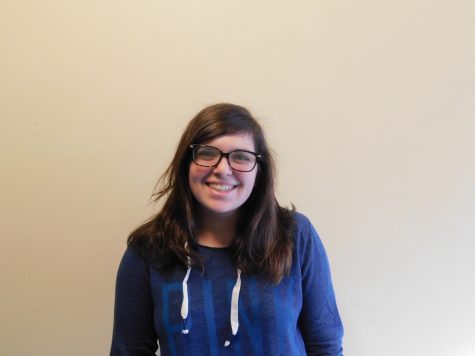Digital media major needs more tech
January 18, 2017
Multimedia and Digital Culture major’s professors have a need for technology to accommodate those enrolled in their courses.
Pitt-Johnstown business professor Travis Stouffer said even though he has his students use basic technology tools like Sublime Text and Java Script, he would like newer technology.
“Technology like DisplayNote would greatly increase classroom engagement by giving the ability to have students shoot what is on their screen onto the projector,” said Stouffer, who teaches the Web Design and Development course.
“This way, professors can do collaborative debugging and lesson-learned activities from actual student errors instead of only having to reproduce those issues on the professor’s machine, so it can be projected,” Stouffer said.
As of now, students use the Google Chrome web browser to view rendered web pages they make and the Chrome developer tools to debug issues they may have, according to Stouffer.
“It would be cool to have dual projection screens so that I could show code on one screen and then the web browser result on the other screen,” Stouffer said.
So far, Stouffer said he has a lot of resources provided from the Pitt-Johnstown technology workers, but he still has more hopes.
“I think we need more computing space,” Stouffer said.
“The Information Systems major has shot up over 60 students over the last year, and, in combination with many programs needing computing space, especially Computer Science and Computer Engineering lab space is difficult to come by,” Stouffer said.
“On top of that, the labs aren’t big enough to support the demand. In fact, this web development class has 26 students on the roster, but there are only 24 seats; I have two students who have volunteered to bring their own laptop and work from their lap,” Stouffer said.
The Multimedia and Digital Culture major is an interdisciplinary major in which students take courses from different subject areas.
According to English Literature professor Jeremy Justus, students have even branched off into enrolling in computer science classes.
“Most of our courses are in the Humanities Division, but, because of the vastness of the major, students are also in business and marketing classes,” Justus said.
Each course provides students with different kinds of technology to learn how to use and nearly master that technology, acording to Justus.
“They use a lot of software and hardware, basically every kind of technology you can think of,” said Justus.
“Students have the freedom to use any kind of technology they would ever want to.”
But, even with all the technology, there are still limits in the courses the students are required to take.
“I hoped Pitt-Johnstown would have access to virtual technology,” said Justus.
“Also, if we had a dedicated computer lab that would be built in a pod system, or circular station areas, rather than rows, it would not seem like a classroom and students and professors could move freely throughout the room.”
Justus is the professor who teaches the Digital Humanities class to the multimedia students.
“It is a core class, but I would prefer to call the class ‘Introduction to the Multimedia Major,’ because that is basically what my syllabus describes,” said Justus.
Multimedia major students experiment in the Communication department as well.
Communication professor Paul Lucas teaches the Media Criticism course for Multimedia students.
“We primarily analyze social media and film in the course,” said Lucas.
“Students use social media clips in class as a basis for analysis. They also examine how content is interpreted based on the medium it is presented in,” said Lucas
Not much technology is needed in this course, but, according to Lucas, some newer equipment may be needed in the future.
“At this stage, the audio and visual equipment covers what is needed in the course,” said Lucas.
“The course may progress differently in the future to where we would need new technology, but that’s good for now,” said Lucas.

